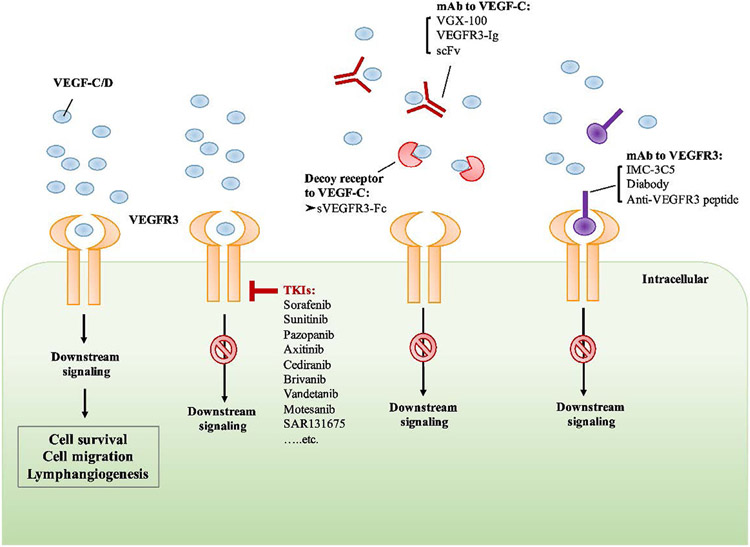Figure 8 –
Potential Anti-Lymphangiogenic Strategies targeting VEGF-C/D binding to VEGFR2/3. The signaling pathways of vascular endothelial growth factors and vascular endothelial growth factor receptors (VEGFs/VEGFRs) and their biological functions. The three tyrosine kinase (TK) receptors have specific binding capabilities. VEGF-A, VEGF-B, and PlGF can bind to VEGFR1 and mediate its biological functions. The binding of VEGF-A, VEGF-C, and VEGF-D can stimulate the activation of VEGFR2, resulting in cell proliferation and angiogenesis. VEGF-C and VEGF-D bind to VEGFR3 and induce downstream signaling which mediates cell survival and lymphangiogenesis. Neuropilin 1 (NRP1) and neuropilin 2 (NRP2) can function as co-receptors for VEGFR2 and VEGFR3. The binding of VEGF-A isoforms and NRP1 can form a complex with VEGFR2, leading to the induction of downstream signaling which regulates the proliferation and migration of endothelial cells. VEGF-C/D bind to NRP2 and forms a complex with VEGFR3, activating the VEGFR3 signaling which enhances the proliferation of lymphatic endothelial cells (LECs) and lymphangiogenesis. MKK4, Mitogen-activated protein kinase kinase-4; JNK1/2, c-Jun N-terminal kinase-1/2; PI3K, phosphoinositide-3 kinase; AKT/PKB, AKT/protein kinase B; PKC, protein kinase C; ERK, extracellular signal–related kinase; SHC-GRB2, Src homology domain containing growth factor receptor–bound protein 2 115. Reproduced with permission.

